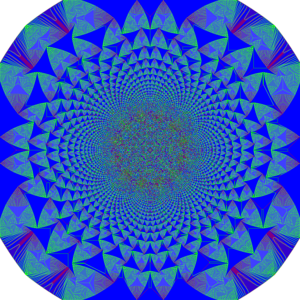
Back Self-georganiseerde kritikaliteit Afrikaans التنظيم الذاتي الحرج Arabic Selbstorganisierte Kritikalität German Criticalidad autorganizada Spanish Criticité auto-organisée French Samoorganizująca się krytyczność Polish Criticalidade auto-organizada Portuguese Самоорганизованная критичность Russian Самозорганізована критичність Ukrainian 自组织临界性 Chinese

| Complex systems |
|---|
| Topics |
Self-organized criticality (SOC) is a property of dynamical systems that have a critical point as an attractor. Their macroscopic behavior thus displays the spatial or temporal scale-invariance characteristic of the critical point of a phase transition, but without the need to tune control parameters to a precise value, because the system, effectively, tunes itself as it evolves towards criticality.
The concept was put forward by Per Bak, Chao Tang and Kurt Wiesenfeld ("BTW") in a paper[1] published in 1987 in Physical Review Letters, and is considered to be one of the mechanisms by which complexity[2] arises in nature. Its concepts have been applied across fields as diverse as geophysics,[3][4][5] physical cosmology, evolutionary biology and ecology, bio-inspired computing and optimization (mathematics), economics, quantum gravity, sociology, solar physics, plasma physics, neurobiology[6][7][8][9][10] and others.
SOC is typically observed in slowly driven non-equilibrium systems with many degrees of freedom and strongly nonlinear dynamics. Many individual examples have been identified since BTW's original paper, but to date there is no known set of general characteristics that guarantee a system will display SOC.
- ^ Bak P, Tang C, Wiesenfeld K (July 1987). "Self-organized criticality: An explanation of the 1/f noise". Physical Review Letters. 59 (4): 381–384. Bibcode:1987PhRvL..59..381B. doi:10.1103/PhysRevLett.59.381. PMID 10035754. Papercore summary: http://papercore.org/Bak1987.
- ^ Bak P, Paczuski M (July 1995). "Complexity, contingency, and criticality". Proceedings of the National Academy of Sciences of the United States of America. 92 (15): 6689–6696. Bibcode:1995PNAS...92.6689B. doi:10.1073/pnas.92.15.6689. PMC 41396. PMID 11607561.
- ^ Smalley Jr RF, Turcotte DL, Solla SA (1985). "A renormalization group approach to the stick-slip behavior of faults". Journal of Geophysical Research. 90 (B2): 1894–1900. Bibcode:1985JGR....90.1894S. doi:10.1029/JB090iB02p01894. S2CID 28835238.
- ^ Smyth WD, Nash JD, Moum JN (March 2019). "Self-organized criticality in geophysical turbulence". Scientific Reports. 9 (1): 3747. Bibcode:2019NatSR...9.3747S. doi:10.1038/s41598-019-39869-w. PMC 6403305. PMID 30842462.
- ^ Hatamian, S. T. (February 1996). "Modeling fragmentation in two dimensions". Pure and Applied Geophysics PAGEOPH. 146 (1): 115–129. Bibcode:1996PApGe.146..115H. doi:10.1007/BF00876672. ISSN 0033-4553.
- ^ Dmitriev A, Dmitriev V (2021-01-20). "Identification of Self-Organized Critical State on Twitter Based on the Retweets' Time Series Analysis". Complexity. 2021: e6612785. doi:10.1155/2021/6612785. ISSN 1076-2787.
- ^ Shapoval A, Le Mouel JL, Shnirman MG, Courtillot V (2018-11-01). "Observational evidence in favor of scale-free evolution of sunspot groups". Astronomy and Astrophysics. 618: A183. Bibcode:2018A&A...618A.183S. doi:10.1051/0004-6361/201832799. ISSN 0004-6361.
- ^ Linkenkaer-Hansen K, Nikouline VV, Palva JM, Ilmoniemi RJ (February 2001). "Long-range temporal correlations and scaling behavior in human brain oscillations". The Journal of Neuroscience. 21 (4): 1370–1377. doi:10.1523/JNEUROSCI.21-04-01370.2001. PMC 6762238. PMID 11160408.
- ^ Beggs JM, Plenz D (December 2003). "Neuronal avalanches in neocortical circuits". The Journal of Neuroscience. 23 (35): 11167–11177. doi:10.1523/JNEUROSCI.23-35-11167.2003. PMC 6741045. PMID 14657176.
- ^ Chialvo DR (2004). "Critical brain networks". Physica A. 340 (4): 756–765. arXiv:cond-mat/0402538. Bibcode:2004PhyA..340..756R. doi:10.1016/j.physa.2004.05.064. S2CID 15922916.